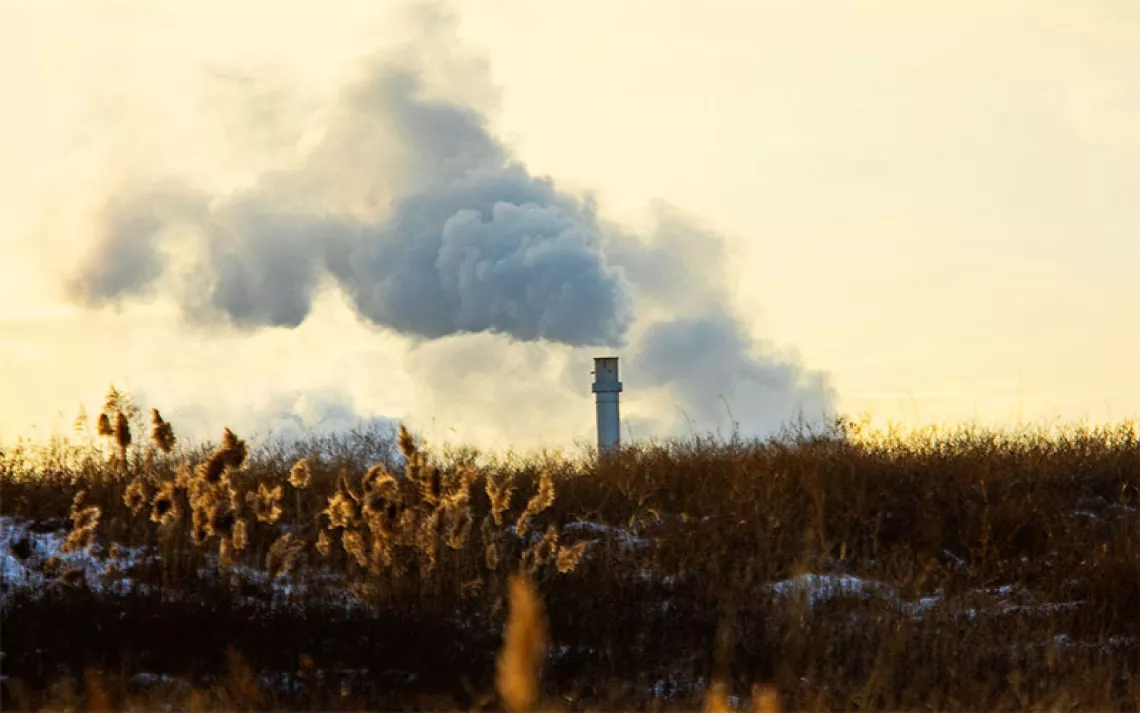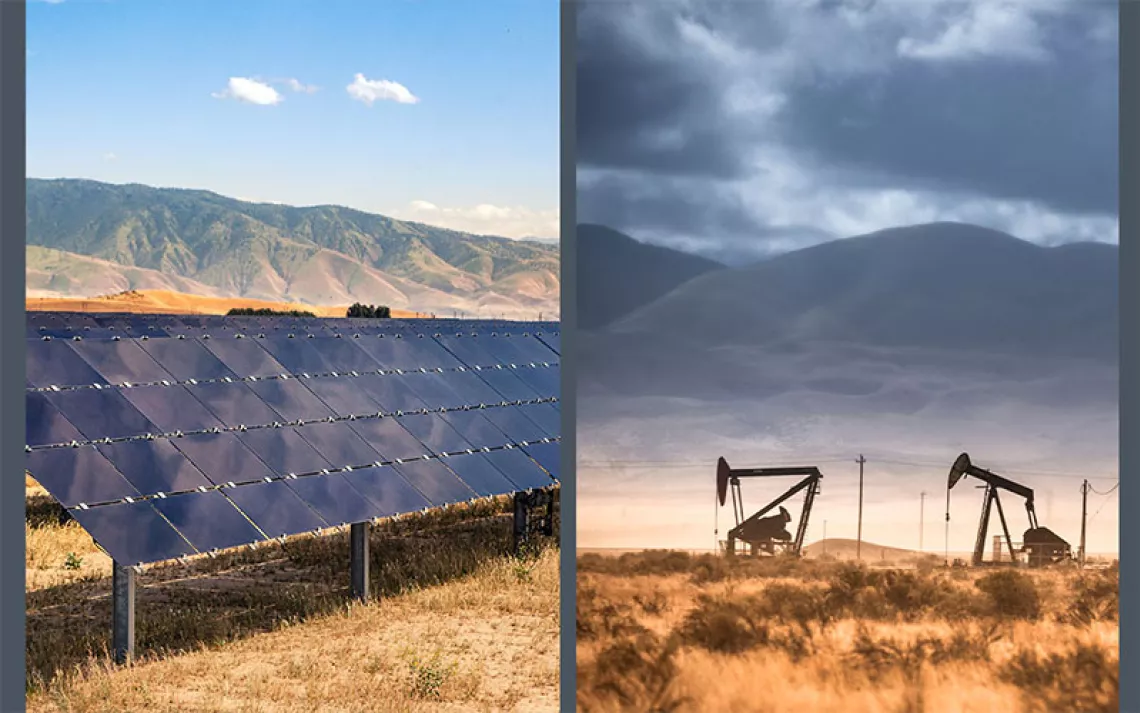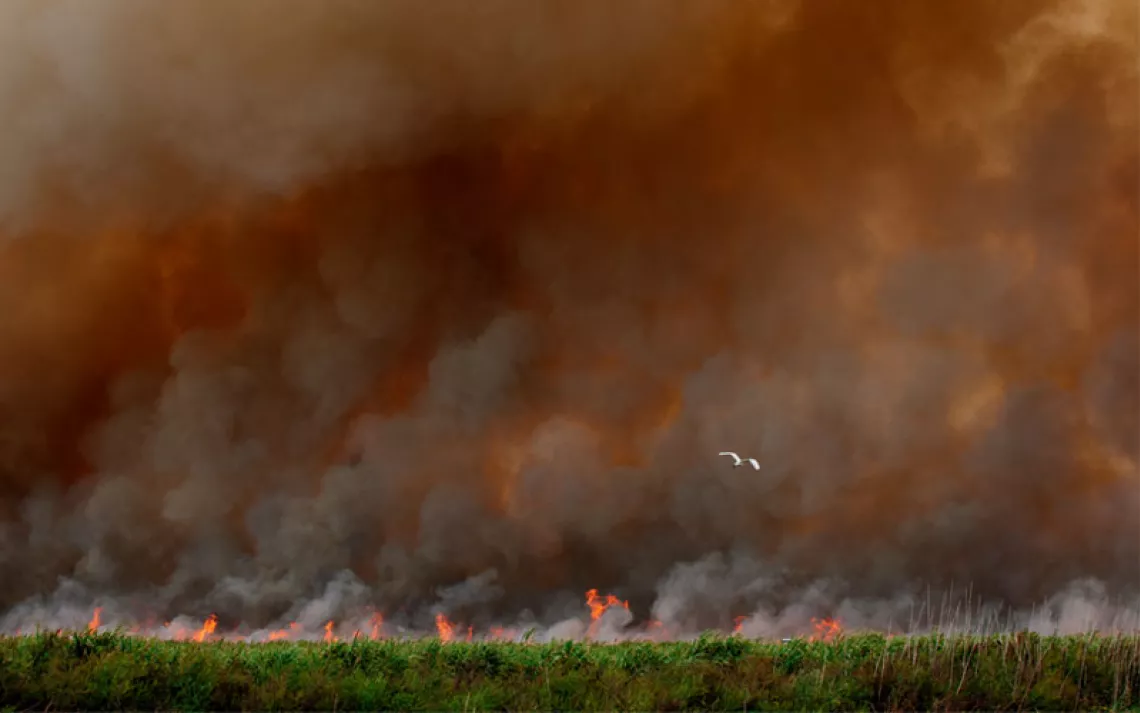2.9 Million Kids Are at Risk From Oil and Gas Operations
Is your child’s school or daycare dangerously close? This map can show you.
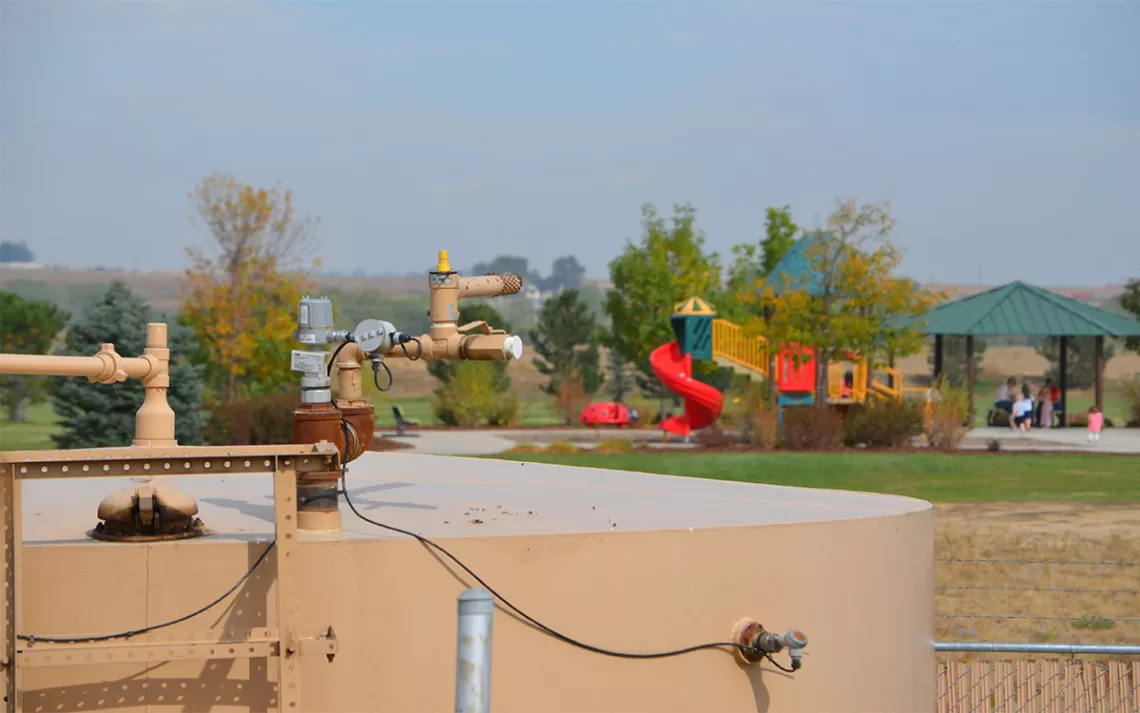
Photo and map courtesy of Earthworks
Almost 3 million kids attend schools within a half mile of oil and gas facilities—and face an elevated cancer risk because of it. That’s the conservative estimate on the new edition of the Oil & Gas Threat Map by environmental nonprofits Clean Air Task Force and Earthworks.
The map includes county-by-county data related to ground-level ozone, asthma attacks, lost school days, air toxics, and cancer risk assessment from oil-and-gas air pollution. Each county is associated with a color based on its air toxicity, with yellow indicating locations within half a mile—the “threat radius”—of active oil and gas facilities. The map also shows the locations of schools and medical facilities within that threat radius. “When it comes to this sort of pollution,” says Lesley Fleischman, technical analyst at Clean Air Task Force, “children, elderly people, and people with preexisting medical conditions are the most susceptible.”
Analyzing ozone smog levels, the Clean Air Task Force estimates that there are 750,000 childhood asthma attacks and 500,000 lost school days each year associated with ozone from oil and gas air pollution. It also used data from the EPA’s National Emissions Inventory to assess cancer impact and concluded that 238 counties in the United States have elevated cancer risks associated with oil and gas facilities.
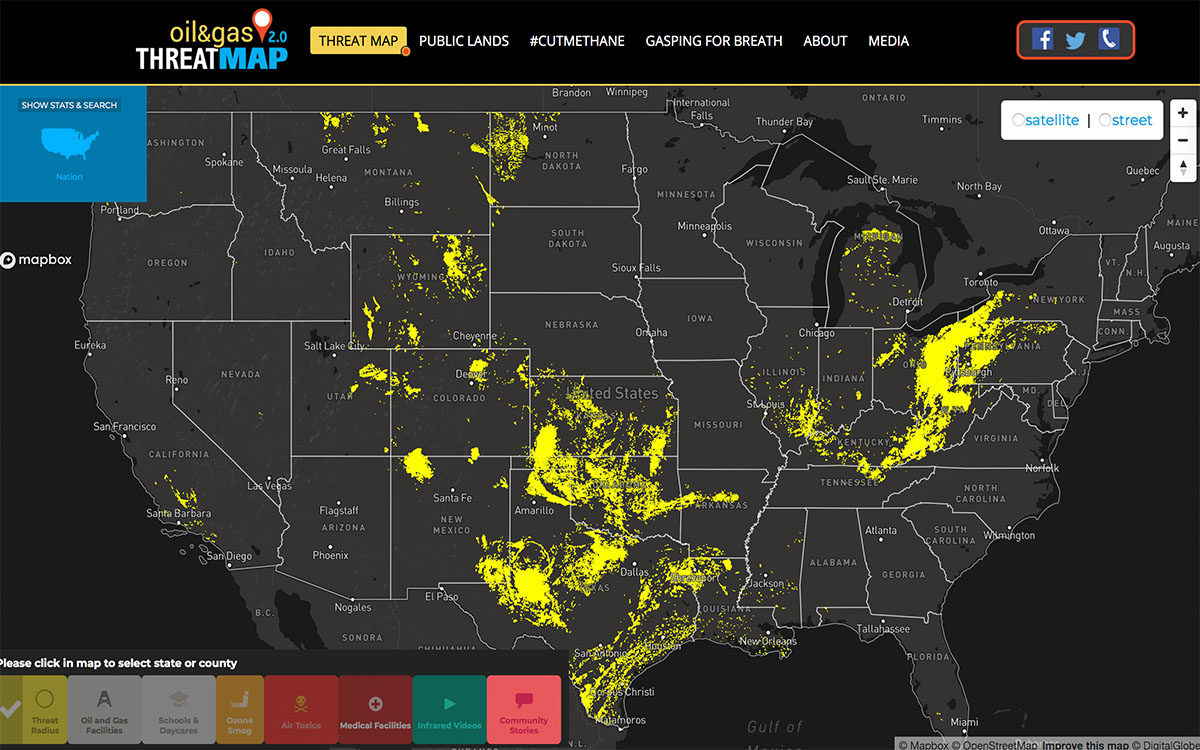
One is Ector County, Texas. Laura Mathew, director of nursing services for the county’s school district, is well aware of the danger. “There isn’t anything that we can do about it,” she says. “We live in West Texas—it’s an area that has an incredible amount of petroleum. That is actually our lifeline. It’s what’s keeping everybody employed.”
Mathew does encourage her students to take precautions, however. “We run trainings in case there should be a leak,” she says. “Our local authorities are good about checking for them, but that’s all that we can do. As school nurses, we always encourage students to get their annual examination.”
It’s not surprising that people adjacent to oil and gas drilling and processing plants have the greatest cancer risk, but what about their neighbors? To Fleischman’s surprise, she says, she found that air pollution can travel hundreds of miles. “Air pollution is emitted in one place, travels, and then forms ozone. If you live next to a facility, you probably know that you’re impacted, but if you live farther away, you still face impacts from that pollution.”
Earthworks has teamed up with local partners to promote its findings. “The idea is for groups on the ground to use the map as a resource and organizing tool—to contact their state and local governments, their federal representatives, or to inform themselves about what’s happening in their neighborhoods,” says Fleischman. “People in local groups can plug in their addresses and schools to see if they’re impacted and locate the closest facilities.”
Another purpose of the map is to influence federal air pollution regulations. “A few years ago the EPA put forward standards that would only cover new and modified facilities,” Fleischman says. “We want to make sure that those regulations are not rolled back. In the longer term, we want all facilities, new and existing, to be covered by these important air pollution regulations.” She notes that the oil and gas industries also cause other environmental impacts—like water pollution and land-use changes—that are not reflected on the map. “If anything,” she says, “our numbers underestimate the true impact.”
 The Magazine of The Sierra Club
The Magazine of The Sierra Club
